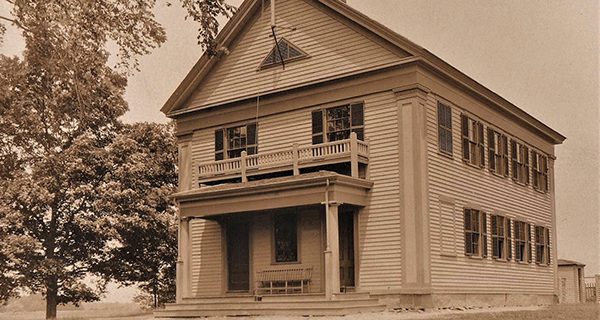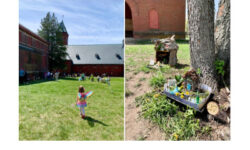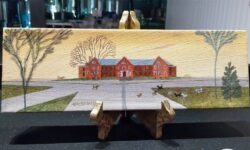[ccfic caption-text format="plaintext"]
As Medfield enters the new year, 2020, a look back at Medfield 100 years ago in 1920. Selectmen were Frank McCarthy, Frank Day and George Sauer. Elected to the school committee were Timothy Kennedy, Susan M. Clark and Allan A. Kingsbury. The moderator was George L.L. Allen. Police officers included Cornelius McKeown, B. Frank Rhodes and Levi Taylor. The fire chief was Allan A. Kingsbury and tree warden was George L.L. Allen.
In Medfield there were 469 cattle, 300 pigs, two sheep and one goat (no relation to Tom Brady). Five dogs were killed after being found with rabies. Inspector of Animals George Cheney reported that “if dog owners would keep their dogs a little ‘closer,’ there would be less rabies.”
Politically, there were 773 registered voters: 457 males, 316 females. (The 19th amendment was adopted in 1920, giving women the right to vote for the first time. Both suffrage and anti-suffrage groups had been active in Medfield. During the presidential election of 1920, 293 women voted, with Martha Allen casting the first vote at 6:15 a.m. and becoming Medfield’s first female to cast a vote in a presidential election). Republican Warren Harding swept Medfield with 544 votes, compared to Democrat James Cox’s 108 votes. Socialist Eugene V. Debs received one vote.
Fifty-one fire alarms were answered; 31 of them were for grass fires started by passing locomotives.
Total circulation of books at the town’s new Memorial Public Library (built and dedicated in 1917) was 10,765. The library received a donated set of “The New International Encyclopedia,” consisting of 25 volumes. The old set of encyclopedias were given to the school’s library. All old magazines were given to the Medfield State Hospital and all discarded books were sent to remote towns in the Southern States.
Total town budget was $111,976, including $17,000 for schools, $10,000 for highway and tar, then called tarvia (the use of tarvia on the streets and sidewalks was beginning to take place on a large scale), $2,000 for police, $1,281 for the fire department, $3,500 for snow removal, $3,000 for street lights, $1,200 for the library and $1,000 to fight the gypsy moth infestation.
There were 33 births in town, 27 marriages, and 24 deaths. Pietro Iafolla and Ernest Iafolla, ages 16 and 11, both drowned in the Charles River near Clark’s Camp (off Dwight Street). Funeral services were held in St. Edward Church in one of the largest funerals ever seen in the church. The body of Wesley Beckwith, who drowned at sea during World War I, was returned to Medfield for burial. The funeral took place in St. Edward Church, with the body escorted from the church to Vine Lake Cemetery on a gun carriage drawn by four black horses. The procession was headed by the Cliquot Band of Millis. Four children, Virginia Morse, Eugene Belmonte, Glenn Mair and Robert Cox, all died under one year of age. There were 100 deaths reported at the Medfield State Hospital.
The Lowell Mason School on School and North Streets was closed. Transportation to the Ralph Wheelock School on Pleasant Street was provided for the North End pupils. The school generally held grades 1-6. For the first time in memory, all town students were now housed under one roof. Total school enrollment was 298, with 13 students graduating with the Medfield High School Class of 1920. Class colors were green and gold.
The town of Medfield purchased the plant, land and franchise of the Medfield Water Company for $12,500, changing the water service from private to public for the first time. Provisions were then made for the election of a board of three water commissioners.
Italian laborers employed at the brickyard (West Street near Bridge Street) who received 50 cents per hour went on strike. Police officer Cornelius McKeown was called to quell the disturbance that resulted.
The Blizzard of 1920 paralyzed Medfield. All train traffic into Medfield was halted. The Woonsocket train was stuck for two days near the Farm Street Station, with 18 passengers on board. Food and supplies were provided to the passengers by neighbors. Freight train traffic was halted for one week and the daily newspapers were not received for three days. In many places, the roads, packed by snow, were several feet higher than the top of fences. Snow drifts were up to 15 feet high. Large numbers of birds died from starvation, as the snow had covered up their natural supply of food. During the winter of 1920, cold snaps also brought the temperatures to 22 below zero on January 11, 20 below zero on January 20, and 22 below zero on February 1.









